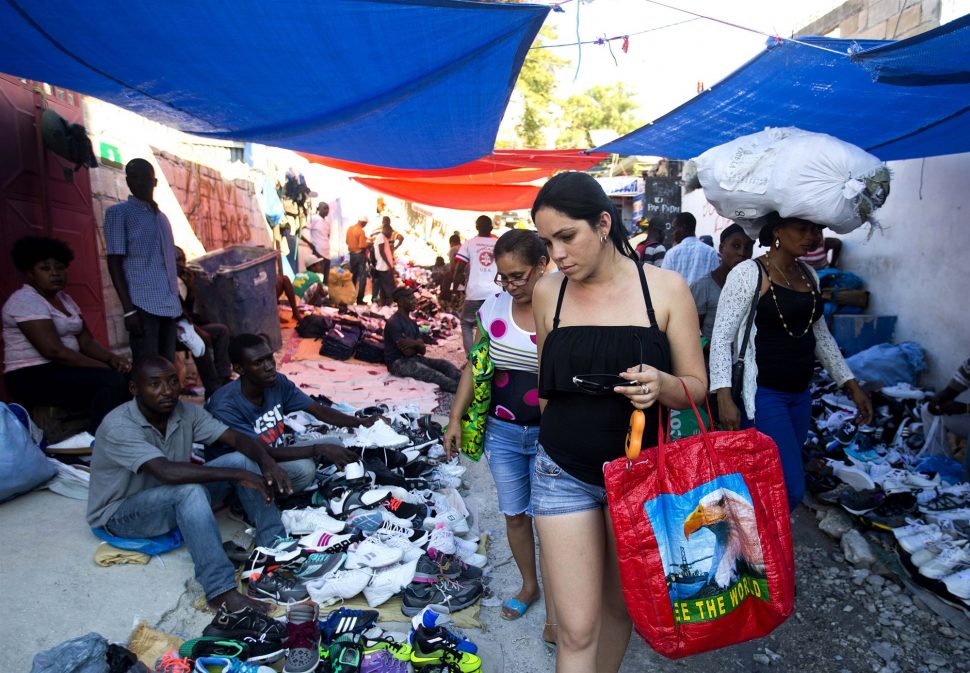With large numbers of Cubans travelling to Guyana in search of bargains, Panama has taken steps to foster and promote trade between the two countries, by allowing flexibility in travel for Cubans who are engaged in merchandising and tourism.
Entry requirements for Cubans have been altered by the Panamanian government, with the new migratory policy providing Cubans with a “tourism card” which allows them to stay in the country for a maximum of 30 days.
Panama Today, in October reported that the new policy, which came into effect late October, allows persons to acquire a “tourist card, which has a cost of 20 dollars and requires that the Cuban who wants to purchase it, comply with the following: own a self-employed card, a creators (artisans) certificate, or to have previously traveled to Panama or to a third country.”
The policy under which the tourism card was created, specifies that the holder will have a one-time entry into the commercial Panamanian territory. Cuban nationals are able to purchase the card from the Panamanian Consulate in Havana, Cuba “and in the places that are determined for that purpose” by Panama’s government.
“It will not be necessary for Cuban citizens who maintain a current Stamped Visa, which will continue to be issued in accordance with pre-established procedures and norms,” the National Immigration Service said in a statement on the introduction of the policy change.
With the migration policy in place, it is likely there will be a reduction in Cubans visiting the Panamanian High Consulate in Havana, Cuba applying for visas. The visa application process is said to burdensome and lengthy.
“Our consulates are saturated by the interest of visiting Panama for purchases and tourism,” so “we decided to give the migration policy with Cuba flexibility,” the Panamanian President, Juan Carlos Varela, told the Panamanian media.
Cubans have been travelling to Haiti, Panama, Cancun, Mexico, Guyana, and Trinidad and Tobago, purchasing commodities such as clothing, household items, hardware, and personal care products, which are said to be retailed two or three times more in Cuban state stores, an Associated Press report reproduced by NBC News stated.
The Associated Press report pointed out that more Cubans are traveling to Panama under the new migratory policy.
According to the report, in Panama, the Colon Free Trade Zone has a “Little Havana” where Cubans spent $308 million last year, and are on track to spending perhaps eight percent more in 2018, said Luis Carlos Saenz, the zone’s general assistant manager.
“We now have an important Cuban clientele who came to make purchases and are making a significant contribution to business in the zone,” Saenz said.
But despite Panama’s new entry waiver, every day hundreds of Cubans are entering Guyana through the Cheddi Jagan International Airport (CJIA). While a majority are entering the country to explore its trade opportunities, others are visiting to acquire a US visa.
Statistics provided by the Guyana Tourism Authority show that between 5,600 and 6,700 Cubans arrive in Guyana monthly. As of September, 54,871 Cubans had entered the country.
Cubans are seen on the streets of Georgetown, travelling in groups, tugging large bags with commodities purchased. In some instances, they stop at shops along Regent and Robb streets, negotiating with sales persons for the best deal.
At the departure terminal of CJIA, they are observed with bags bundled into parcels filled with items purchased to take back to Cuba.
“This type of business tourism has diversified a trade focused for a long time in South Florida. That trade began to dry up with the decision of the Trump administration to remove most of the staff from its embassy in the Cuban capital last year, which ended the processing of visas on the island and forced the Cubans to travel to third countries to request permission to visit the United States,” the Associated Press report explained.

